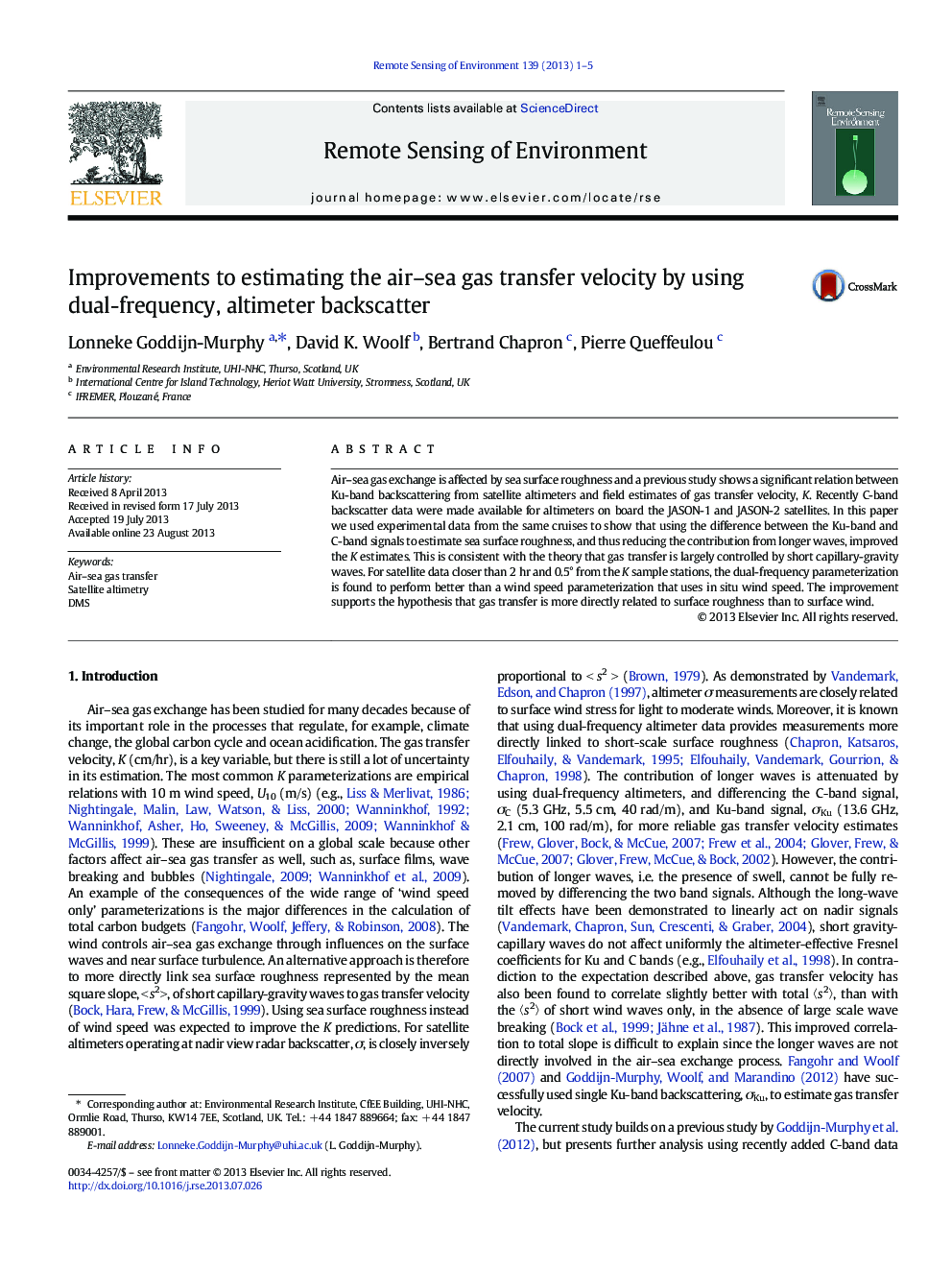| Article ID | Journal | Published Year | Pages | File Type |
|---|---|---|---|---|
| 6347113 | Remote Sensing of Environment | 2013 | 5 Pages |
Abstract
Air-sea gas exchange is affected by sea surface roughness and a previous study shows a significant relation between Ku-band backscattering from satellite altimeters and field estimates of gas transfer velocity, K. Recently C-band backscatter data were made available for altimeters on board the JASON-1 and JASON-2 satellites. In this paper we used experimental data from the same cruises to show that using the difference between the Ku-band and C-band signals to estimate sea surface roughness, and thus reducing the contribution from longer waves, improved the K estimates. This is consistent with the theory that gas transfer is largely controlled by short capillary-gravity waves. For satellite data closer than 2 hr and 0.5° from the K sample stations, the dual-frequency parameterization is found to perform better than a wind speed parameterization that uses in situ wind speed. The improvement supports the hypothesis that gas transfer is more directly related to surface roughness than to surface wind.
Keywords
Related Topics
Physical Sciences and Engineering
Earth and Planetary Sciences
Computers in Earth Sciences
Authors
Lonneke Goddijn-Murphy, David K. Woolf, Bertrand Chapron, Pierre Queffeulou,
